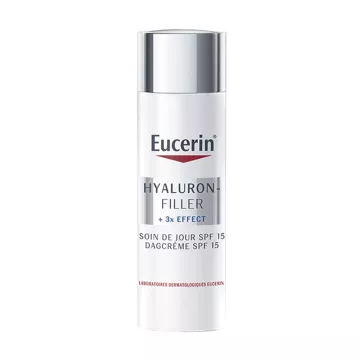
What is Hyaluronic Acid and what is its role in dermatology?
Hyaluronic acid is a molecule naturally present in the body, mainly in the skin, joints and connective tissue. It plays a fundamental role inskin hydration, suppleness and joint lubrication. With age, its production declines, leading to loss of volume, the appearance of wrinkles and skin dryness. In cosmetics and aesthetic medicine, it is used in the form of serums, moisturizing creams ordermal injections to restore skin elasticity and firmness.
What are the benefits of Hyaluronic Acid for the skin?
Hyaluronic Acid is a powerful moisturizing active ingredient offering several benefits: 1. Intense hydration: It retains up to 1,000 times its weight in water, reinforcing the cutaneous barrier and preventing dehydration. 2. Reduction of fine lines and wrinkles: It fills intercellular spaces and restores volume to areas marked by ageing. 3. Improves skin elasticity: stimulates collagen production, contributing to firmer, plumper skin. 4. immediate plumping effect: acts as a tensing agent, smoothing skin and reducing signs of fatigue. 5. accelerates healing: promotes cell regeneration and helps repair skin after irritation or cosmetic procedures. 6. antioxidant action: It protects the skin from free radicals and prevents premature aging due to external aggression.
How to apply Hyaluronic Acid for maximum effectiveness?
Hyaluronic Ac id should be applied to slightly damp skin to optimize its moisturizing effect. It is recommended to use it as a serum, followed by a moisturizing cream to seal in hydration. When used as a dietary supplement, a course of 60-120 mg per day can improve skin density and elasticity. For visible results, application must be daily and integrated into a suitable skincare routine.
Is Hyaluronic Acid suitable for all skin types?
Hyaluronic Ac id is suitable for all skin types, including sensitive, oily and acne-prone skin, thanks to its light, non-comedogenic texture. It is particularly recommended for mature and dehydrated skin, which benefits from its plumping and smoothing effect. Unlike exfoliating acids, it does not irritate the skin, and can be used in combination with other active ingredients such as vitamin C, ceramides or niacinamide.
What are the side effects and precautions for using Hyaluronic Acid?
Hyaluronic Acid is generally well tolerated, but reactions can occur, particularly after dermal injections. The main side effects include redness, temporary swelling, bruising or sensitivity at the injection site. Applied topically, it is very well tolerated, except in the case of over-concentrated formulations, which can cause a pulling sensation. Always moisturize after application, and choose products suited to your skin type.
What's the difference between low and high molecular weight Hyaluronic Acid?
Hyaluronic Acid exists in different forms, depending on the size of its molecules, thus influencing its action on the skin. - High molecular weight: It remains on the surface and forms a protective film, preventing water evaporation and providing an immediate tightening effect. - Low molecular weight: Penetrates deeply and stimulates collagen synthesis, effectively reducing the signs of aging. A product combining both types of Hyaluronic Acid is ideal for complete, long-lasting hydration.
Hyaluronic acid injections: what results can you expect?
Hyaluronic Acid injections are used in aesthetic medicine to restore volume, fill deep wrinkles and restore facial contours. The main treatments include : - Filling nasolabial folds and bitterness folds - Increasing lip volume - Redefining cheekbones and facial oval - Correcting sunken dark circles Results are immediate and last an average of 6 to 12 months, depending on the cross-linking of the product used and the patient's metabolism. A consultation with a qualified aesthetic physician is essential to guarantee a natural, harmonious result.
Can Hyaluronic Acid be combined with other active ingredients?
Hyaluronic Ac id is easily integrated into a skin care routine and can be combined with other active ingredients:
Vitamin C: Enhances radiance and protects against oxidation.
Retinol: Optimizes cell renewal and smoothes fine lines.
Peptides: Stimulate collagen production and improve skin firmness.
Exfoliating acids (AHA, BHA): Risk of irritation if used simultaneously with highly concentrated formulations.
To avoid a skin reaction,alternate the use of these active ingredients or space out their application.
How long does it take to see the effects of Hyaluronic Acid?
The immediate effects ofHyaluronic Acid applied topically are visible within minutes, particularly in terms ofhydration and plumping. For action on skin ageing, results appear after 4 to 6 weeks of regular use. With injections, the final result is optimal after 10 to 15 days, oncethe product has fully integrated into the tissues.